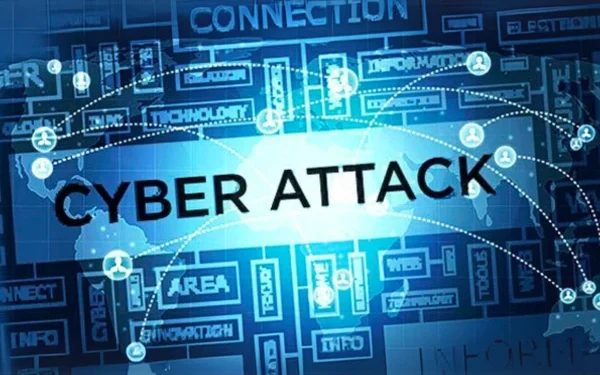Introduction: Rising Tensions Between Iran and Israel Enter a New Domain
In the latest and most concerning development amid escalating hostilities, Iran has launched a large-scale cyberattack against Israel, marking a significant expansion of their conflict from physical to digital battlegrounds. According to Israeli media outlets, thousands of Israeli citizens received alarming messages on their mobile phones instructing them to “seek shelter” and “stockpile fuel,” triggering panic among the public. The incident follows a series of missile and drone attacks launched by Iran, adding a new layer of complexity to an already volatile situation.
Details of the Cyberattack: Fake Alerts Cause Public Alarm
Israeli officials quickly confirmed that the messages received by citizens were part of a cyber offensive originating from Iran. These deceptive notifications mimicked official emergency alerts, prompting recipients to take immediate action under false pretenses.
According to cyber security analysts, the attack exploited vulnerabilities in public communication channels to sow confusion and fear among civilians. This tactic is consistent with psychological warfare strategies aimed at destabilizing societies without launching a single conventional weapon.
Israeli authorities responded by urging the public to ignore the messages and rely solely on verified communication channels for emergency instructions. In the meantime, cybersecurity teams were dispatched to investigate the breach, assess the damage, and prevent further infiltration.
Background: Escalation in Iran-Israel Conflict
This cyber offensive comes in the wake of a major escalation in military tensions between the two nations. On the night between Monday and Tuesday, Iran launched a massive barrage of missiles and drones targeting key Israeli cities, including Tel Aviv and Haifa.
As a result of these coordinated attacks:
- The Haifa oil refinery was completely shut down.
- At least three refinery workers were killed.
- Several infrastructure systems across Israel suffered operational disruptions.
- More than 24 Israelis have been confirmed dead since Friday’s attacks.
- Over 600 individuals have been injured, according to official Israeli health sources.
The timing of the cyberattack—shortly after the missile strikes—suggests a well-orchestrated campaign by Iran to exert pressure on multiple fronts simultaneously.
The Strategic Intent: Cyber Warfare as a Modern Weapon
Experts believe Iran’s move to unleash a cyberattack highlights a broader strategy of hybrid warfare, which combines traditional military action with digital disruption.
Cybersecurity analyst Dr. Eitan Ziv noted:
“This cyberattack wasn’t about causing physical destruction; it was about shaking public confidence and creating internal chaos. In today’s interconnected world, these digital tactics can be just as damaging as conventional weapons.”
By targeting communication infrastructure and spreading false information, Iran appears to be testing Israel’s crisis response mechanisms, as well as its citizens’ trust in government-issued alerts. These efforts also aim to complicate Israel’s defense strategy by forcing the state to allocate resources to both physical and virtual battlefronts.
Israel’s Response: Heightened Alerts and National Mobilization
In response to both the missile barrage and cyberattack, the Israeli government has:
- Placed all critical institutions on high alert.
- Temporarily shut down non-essential public services in Haifa and parts of Tel Aviv.
- Ordered a comprehensive audit of the country’s emergency alert system.
- Mobilized elite cyber units under Israel’s Unit 8200 to counter further intrusions.
Additionally, Israeli Prime Minister Benjamin Netanyahu convened an emergency meeting with military and intelligence officials to discuss the broader implications of the cyberattack. While no official counter-strikes have been announced in response to the digital offensive, insiders suggest retaliatory cyber measures may be underway.
Civilian Impact: Fear and Misinformation Spread Rapidly
The messages urging people to seek fuel and shelter caused widespread confusion among ordinary Israelis. Social media platforms were flooded with screenshots of the warnings, leading to temporary fuel shortages at several stations due to panic buying.
Emergency services also reported a surge in non-emergency calls, as frightened citizens sought clarification on whether the alerts were genuine. In some cities, local governments took extra steps to issue clarifications in real-time to avoid mass hysteria.
Voices from the Ground
One Tel Aviv resident, Orly Ben-David, described the moment she received the alert:
“I was sitting with my children when the message popped up. It looked real. I started gathering our essentials, thinking we were under chemical attack. It was terrifying.”
The incident underscores the psychological toll cyber warfare can exert on the public, even without direct physical consequences.
Regional and International Reactions
The latest developments have raised alarm bells across the Middle East and among global powers. The United Nations issued a statement urging both nations to exercise restraint and avoid further escalation that could spiral into a full-scale regional conflict.
The United States, a key ally of Israel, condemned Iran’s cyber activities and affirmed its commitment to supporting Israel’s right to self-defense in all domains—land, air, sea, and cyber.
Meanwhile, Iran has not officially commented on the cyberattack, maintaining plausible deniability, a hallmark of state-sponsored cyber aggression. However, Iranian media outlets have celebrated the disruption caused in Israel, framing it as a “resistance operation.”
Broader Implications: Cybersecurity Becomes a National Security Priority
The cyberattack on Israel illustrates the growing importance of cybersecurity in modern warfare. What was once considered a supplementary defense concern is now central to national security. Israeli officials are now calling for an overhaul of cybersecurity frameworks to defend not only government systems but also civilian infrastructure and private sector networks.
Experts warn that as conflicts evolve, more nations will invest in offensive cyber capabilities, potentially leading to an arms race in the digital realm.
The Role of AI and Technology
Another key takeaway is the evolving sophistication of cyberattacks, especially when augmented by artificial intelligence. Fake messages were reportedly generated using machine learning algorithms capable of mimicking official Israeli communication templates, increasing their credibility.
Conclusion: A New Era of Conflict
The cyberattack on Israel by Iran marks a turning point in the evolving landscape of international conflict. No longer confined to missile exchanges and territorial skirmishes, warfare now includes psychological manipulation, digital disruption, and information warfare.
As tensions continue to rise, both Israel and Iran are expected to escalate their use of technology to gain the upper hand. For civilians, this means increased vulnerability—not just to bombs or rockets, but to bytes and misinformation.
Governments around the world must now prepare for a future where wars are not only fought on the battlefield but also in cyberspace, targeting both infrastructure and the minds of people.

























